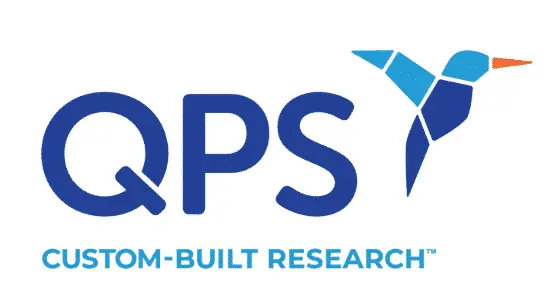Clinical Biostatistics Consultancy and Services in Study Design
This service involves collaborating with study sponsors and researchers to develop a robust study design tailored to the specific objectives of a clinical trial. Biostatisticians provide expertise in selecting appropriate study designs (e.g., randomized controlled trials, cohort studies) and methodologies, including which endpoints to measure, the timing of assessments, and strategies to address potential biases. This consultation ensures that the study is methodologically sound and capable of answering the research questions effectively.
Advice in Study Planning / Sample Size Evaluation
Biostatisticians assist in determining the appropriate sample size needed to achieve statistically significant results while minimizing resources. This involves using statistical power analysis to estimate the minimum number of participants required to detect an effect of a given size, taking into account expected dropout rates and variability in the data. Proper sample size evaluation helps ensure that the study is adequately powered to detect meaningful differences between treatment groups.
Development of Statistical Analysis Plan (SAP)
The SAP is a comprehensive document that outlines the statistical methods and analyses that will be used to evaluate the study data. This plan includes details on how data will be processed, which statistical tests will be applied, how missing data will be handled, and the criteria for interpreting the results. The SAP serves as a roadmap for the analysis and is crucial for ensuring transparency and reproducibility in the statistical evaluation.
Development of Biostatistical Management Plan (BSMP)
The BSMP provides a framework for managing biostatistical activities throughout the clinical trial process. It outlines the roles and responsibilities of the biostatistical team, the timelines for deliverables, and the procedures for data handling and analysis. The BSMP ensures that biostatistical efforts are aligned with the overall study objectives and regulatory requirements, facilitating efficient collaboration among stakeholders.
Creation and Development of Randomization Schedules and Web-Based Randomization
Randomization is a critical aspect of clinical trials, helping to eliminate bias by assigning participants to treatment groups randomly. Biostatisticians create randomization schedules that specify how participants will be assigned to different treatment arms. Web-based randomization tools facilitate this process by allowing researchers and site staff to access randomization assignments securely and efficiently during patient enrollment, ensuring that the randomization process is both transparent and auditable.
Data Checks for Consistency, Validity, and Plausibility
Before conducting statistical analyses, biostatisticians perform thorough data checks to ensure that the data is accurate and reliable. This includes consistency checks (e.g., verifying that related variables align), validity checks (e.g., confirming that data falls within expected ranges), and plausibility checks (e.g., ensuring that reported outcomes make clinical sense). These checks help identify and rectify any errors or anomalies in the data prior to analysis.
Statistical Programming with State-of-the-Art Software (SAS Version 9.4)
Statistical programming involves using specialized software, such as SAS (Statistical Analysis System), to perform statistical analyses and generate reports. SAS version 9.4 is widely used in the clinical research industry due to its powerful analytical capabilities and flexibility. Biostatisticians use SAS to manipulate datasets, conduct analyses, and create outputs in accordance with study protocols and regulatory standards.
Statistical Data Analysis
This service entails applying statistical methods to evaluate the data collected during the clinical trial. Biostatisticians perform various analyses, such as hypothesis testing, regression modeling, survival analysis, and more, to derive insights and assess the efficacy and safety of the treatments being studied. The results of these analyses inform conclusions about the study hypotheses and contribute to the overall understanding of the treatment’s impact.
Preparation of Tables, Listings, and Figures (TLFs)
Tables, listings, and figures are essential components of study reports, providing a visual representation of the data and results. Biostatisticians prepare these TLFs to summarize key findings, display trends, and present detailed information about the trial’s outcomes. TLFs are designed to facilitate understanding and interpretation of the data, making the results accessible to various stakeholders, including regulatory agencies, clinical teams, and the scientific community.
Double Programming Used to Validate TLFs
Double programming is a quality assurance practice where two independent programmers create the same statistical outputs (e.g., TLFs) using the same dataset and analysis plan. This process helps identify discrepancies and verify the accuracy of the results. By comparing the outputs, biostatisticians can ensure that the analyses are correct and that the findings are reliable and reproducible.
Data Analysis to Support DSMB and Dose Escalation Decision
Data Safety Monitoring Boards (DSMBs) review interim data to ensure participant safety and study integrity. Biostatisticians conduct analyses to provide relevant data to DSMBs, helping them make informed decisions regarding the continuation or modification of the trial. In studies involving dose escalation, biostatisticians analyze safety and efficacy data to determine safe and appropriate dosage levels for subsequent phases of the trial. This analysis typically includes evaluating adverse events, treatment responses, and pharmacokinetic data to assess whether the higher doses are yielding improved efficacy without unacceptable toxicity. By employing statistical models and methods, biostatisticians can identify trends and potential risks associated with dose increases, allowing the DSMB to make data-driven recommendations on whether to escalate the dose, maintain the current dose, or reduce it to ensure participant safety. The findings presented to the DSMB are crucial for guiding ethical decision-making and ensuring that the study adheres to regulatory requirements while prioritizing patient welfare.
Interim Data Analysis
Interim data analysis involves the evaluation of data collected at specific points during a clinical trial before its completion. This analysis is crucial for monitoring participant safety, treatment efficacy, and overall study integrity. Biostatisticians perform interim analyses to assess trends and outcomes that may inform decisions regarding the continuation, modification, or termination of the trial. These analyses can include evaluations of primary and secondary endpoints, safety signals, and other relevant metrics. Results from interim analyses are typically reviewed by Data Safety Monitoring Boards (DSMBs) to ensure that ethical considerations are met and that the study is progressing as planned.
Creation of ADaM Datasets and Package Meeting Regulatory Compliance
The creation of Analysis Data Model (ADaM) datasets is a key step in preparing clinical trial data for statistical analysis and regulatory submission. ADaM datasets are designed to facilitate clear and efficient statistical analysis, and they must adhere to specific regulatory standards set forth by agencies such as the FDA and EMA. Biostatisticians are responsible for transforming raw clinical data into ADaM-compliant datasets, ensuring that they are well-structured, properly annotated, and include all necessary variables for analysis. Additionally, a comprehensive ADaM package includes documentation that outlines the dataset structure, derivation of variables, and any transformations applied, ensuring transparency and reproducibility in the analysis.
Data Extracts for Further Processing
Data extracts are subsets of the clinical trial data that are prepared for specific analyses or for use in other processes such as additional programming, reporting, or exploratory analysis. Biostatisticians create these extracts to streamline data handling by selecting relevant variables and observations needed for particular analyses. This process involves careful data management to ensure that the extracted datasets maintain integrity and are representative of the original data. Data extracts can also facilitate data sharing with other teams or external stakeholders for secondary analyses, ensuring that relevant data is readily available while minimizing the risk of errors.
Presentation of Results (Interim Study Reports / Statistical Analysis Report)
The presentation of results is a critical component of the data analysis process. Biostatisticians prepare Interim Study Reports (ISRs) and Statistical Analysis Reports (SARs) that summarize the findings of the analyses performed. These reports typically include descriptive statistics, results of hypothesis testing, graphical representations of data, and interpretations of the findings. ISRs are often shared with stakeholders, such as sponsors and DSMBs, to provide updates on study progress and safety outcomes, while SARs are more comprehensive documents that detail the methodologies, results, and conclusions drawn from the analyses. The clarity and accuracy of these reports are essential for informed decision-making and regulatory compliance.
Interpretation, Conclusion, and Reporting of Data from a Statistical Perspective
The interpretation of statistical results is a vital step in understanding the implications of the study findings. Biostatisticians analyze the results in the context of the study hypotheses, considering factors such as effect size, confidence intervals, and p-values. They draw conclusions based on the statistical evidence and provide insights into the clinical relevance of the findings. This interpretation is often summarized in reports and presentations, where biostatisticians communicate the significance of the results, any limitations of the analysis, and recommendations for future research or clinical practice. Clear and concise reporting is crucial for stakeholders to grasp the implications of the data.
Preparation of BIMO for Regulatory Submissions
BIMO (Bioresearch Monitoring) refers to the regulatory oversight of clinical trials to ensure that they are conducted in compliance with Good Clinical Practice (GCP) and that the data generated is reliable. The preparation of BIMO documentation involves compiling data and information that demonstrate adherence to regulatory standards throughout the study. This includes detailed records of study conduct, data management practices, and quality control measures. Biostatisticians play a role in ensuring that the data presented is accurate, complete, and properly documented, which is essential for successful regulatory submissions. This preparation helps facilitate the review process by regulatory authorities and supports the integrity of the submitted data.
Publication and Presentation Material
Once the study findings have been analyzed, biostatisticians assist in creating publication and presentation materials that effectively communicate the results to the scientific community and stakeholders. This includes drafting manuscripts for peer-reviewed journals, creating slides for presentations at conferences, and developing posters that summarize key findings. The materials must be scientifically rigorous, clearly presenting the methodology, results, and implications of the research. Additionally, biostatisticians ensure that all graphical representations, tables, and figures are accurate and adhere to publication standards. The dissemination of results through publications and presentations is crucial for advancing scientific knowledge and informing clinical practices.
Data management in clinical trials is foundational for ensuring the quality and integrity of the data collected, which in turn is critical for the success of the trial, patient safety, and regulatory approval of new therapies or interventions. The QPS Global Data Management team is comprised of experts who are ready to support your next clinical trial project. Contact us today to learn more.
Links to Relevant Documents
- Efficiently Performing Two Global Approval Studies in Prostate Cancer Patients
- Phase II-IV Clinical Overview
- Phase II-IV Clinical Services & Locations
- Early Phase Clinical Overview
- Expedited Study Delivery – Logistics
- Expedited Study Delivery – Pharmacy
- Studying Sedatives in Phase I Studies
- Pharmacokinetic Studies in Patients
- Corporate Overview Clinical Sites






